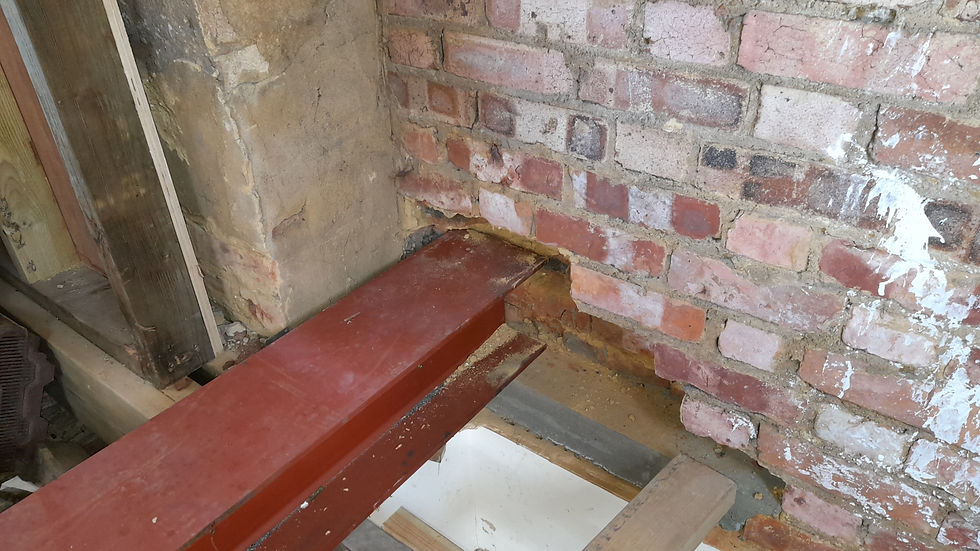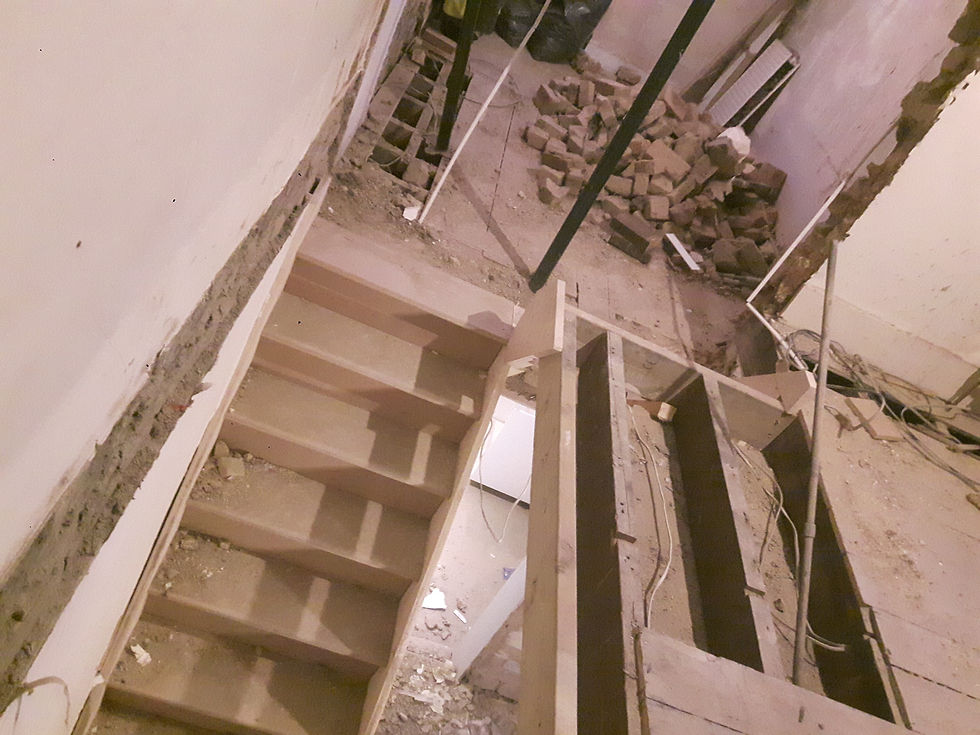What Is a Party Wall Notice and Why Do I Need One?
- Tom Norris

- Sep 7
- 4 min read
Updated: Sep 8
The Complete Homeowner’s Guide for London & the Home Counties

Introduction
If you’re planning a loft conversion in Streatham, a basement in Kensington, or an extension in Surrey, chances are you’ve been told to serve a Party Wall Notice. But what exactly is a Party Wall Notice, why do you need one, and what happens if you skip this step?
In this guide, we’ll break down the Party Wall etc. Act 1996 in plain English, explaining when you need a notice, how to serve it properly, and how it protects you and your neighbours.
What Is a Party Wall Notice?
A Party Wall Notice is a formal legal document served by a property owner (the “Building Owner”) to their neighbours (the “Adjoining Owners”) before starting any building work that could affect a shared structure or boundary.
It’s not just paperwork; it’s a legal safeguard designed to:
Notify your neighbours of your plans.
Give them time to consent or raise concerns.
Prevent disputes by documenting agreements in advance.
Think of it as a “heads up” backed by law. Without it, your project could be halted or result in expensive claims for damages.
When Is a Party Wall Notice Required?
You’ll need to serve a notice if your building work falls into any of these categories:
Work on a Party Wall or Party Structure
Removing a chimney breast from a shared wall.
Cutting into a wall to install steel beams (RSJs) for a loft conversion.
Raising or rebuilding a boundary wall.
Building New Walls on or Near a Boundary
Constructing a wall astride or directly on the boundary line.
Excavation Near a Neighbour’s Property
Digging within 3 metres of a neighbour’s property where your foundations are deeper than theirs.
Digging within 6 metres where deep foundations or piles are planned (common in basements).
Essentially, if your work is on or close to a neighbour’s property and could affect it structurally, a Party Wall Notice is required.
Who Can Serve a Party Wall Notice?
Technically, you (the property owner) can serve the notice yourself. However:
Mistakes in notices are common and can invalidate them.
Incorrect notices often cause unnecessary disputes or delays.
If your neighbour dissents (objects), you’ll need a surveyor anyway.
Many homeowners choose a Party Wall Surveyor (like MET Surveyors) to draft and serve notices to avoid these pitfalls.
How to Serve a Party Wall Notice Correctly
A valid Party Wall Notice must include:
Your name and address (Building Owner).
The neighbour’s details (Adjoining Owner).
A clear description of the proposed works.
A statement of your intention to exercise rights under the Act.
A start date for the works.
The date of service and your signature.
Delivery Options:
In person (hand delivery).
By post to the neighbour’s home or registered office.
By email (only if the neighbour has agreed in writing).
Notice Periods:
Two months before works to party walls or boundaries.
One month before excavation works.
What Happens After You Serve the Notice
Neighbours have 14 days to respond:
Consent: They agree in writing, and no formal surveyor involvement is needed.
Dissent: They don’t agree or request changes. A Party Wall Award will be prepared.
No Response: After 14 days, this is treated as dissent, and surveyors are appointed.
If dissent occurs, a Party Wall Award (a legally binding document) is created to protect both parties, covering:
The scope of work.
Timelines.
Protective measures (e.g., vibration monitoring).
Who pays for what (usually the Building Owner).
Why a Party Wall Notice Protects You
Some homeowners see notices as a hassle, but they’re your insurance policy. Without one, you risk:
Legal Injunctions: Neighbours can stop your work immediately.
Financial Claims: You may be liable for damage without formal documentation.
Delays: Disputes are harder to resolve without clear records.
Serving a notice early also shows neighbours you’re being transparent, which builds trust and reduces conflict.
Example Scenarios
South London Loft Conversion: A Streatham homeowner wanted to remove a chimney breast. We served notices to both neighbours, secured consent, and work started within 4 weeks.
Kensington Basement Project: Deep excavation triggered notices to four adjoining owners. A Party Wall Award was agreed, and the project ran smoothly with zero disputes.
Surrey Rear Extension: Even in detached homes, a wall built close to a boundary required a notice. Compliance saved the owner from neighbour objections mid-build.
FAQs
Q: Can I start work without a Party Wall Notice? No. Starting without serving notices risks an injunction, stopping your work instantly.
Q: Can I serve notices myself? Yes, but professional notices reduce risk and show diligence.
Q: How long does the process take? Allow 6–8 weeks for notice, response, and any required surveyor involvement.
Why Choose MET Surveyors for Party Wall Notices
Expert Drafting: No invalid notices or legal delays.
Full Coverage: We serve notices across London & the Home Counties.
Neighbour Mediation: We act as impartial experts, reducing stress.
Fixed Fees: Clear pricing with no surprises.
We’ve served thousands of notices for projects from terraced loft conversions to multi-unit developments.
Next Steps: Protect Your Project Today
If you’re planning work that may trigger the Party Wall Act, don’t leave it to chance. MET Surveyors can:
Draft and serve your notices correctly.
Liaise with neighbours to secure consents.
Handle disputes and prepare legally binding awards.
Book a Callback: Speak directly with a Party Wall expert today. We proudly serve all London boroughs and the Home Counties, including Surrey, Kent, Essex, Hertfordshire, and Berkshire.







Comments